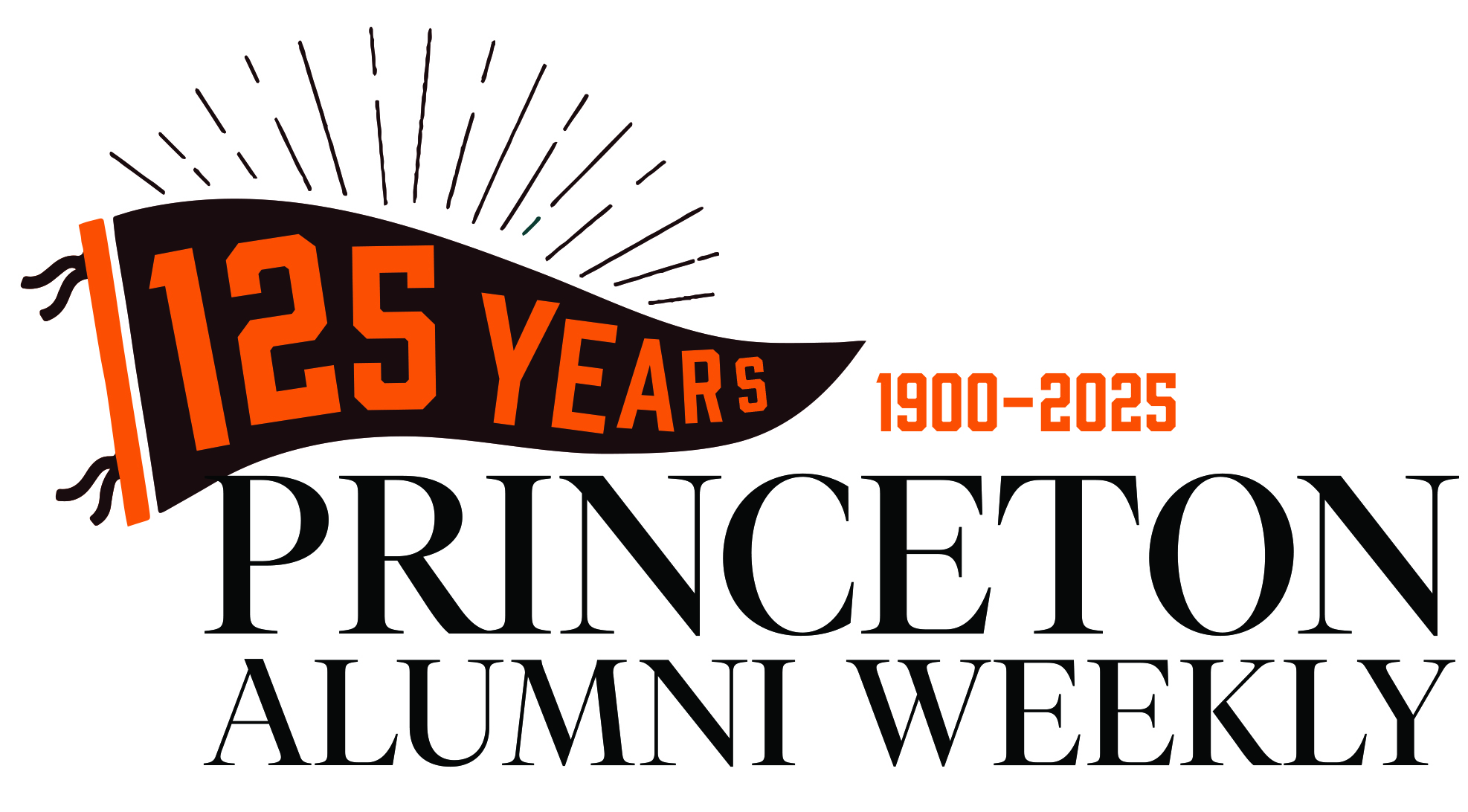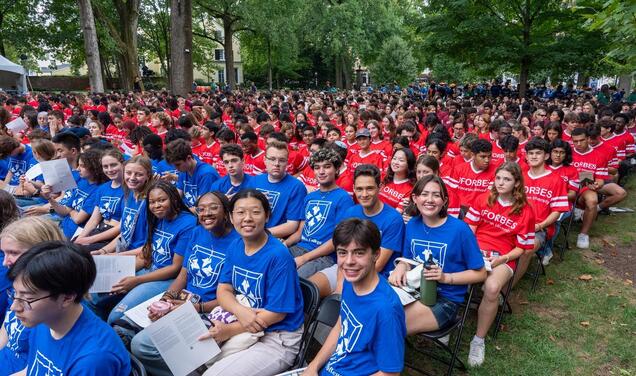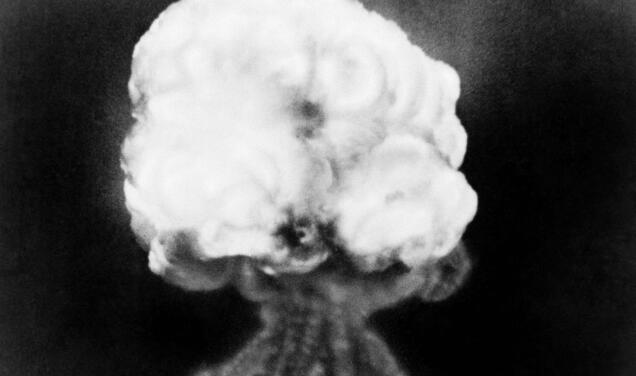
Princeton head coach Bob Surace ’90 grew up around football, watching his father coach the high school team in his hometown of Millville, N.J. The conventional wisdom back then was that preparing for a game should look pretty much like playing one, with full contact at nearly every position. “Every practice was simulating games,” he says.
The same was true when Surace played in high school, and when he traveled north to Princeton in 1986 for his freshman season on the offensive line. But when Surace reached the NFL as an assistant coach for the Cincinnati Bengals, the contact in practice was conspicuously absent. Marvin Lewis, the Bengals’ head coach from 2003 to 2018 and one of the game’s renowned defensive minds, saw that professional athletes could succeed without putting unnecessary stress on their bodies.
Surace says he’s borrowed from Lewis’ approach when planning his own practices. At Princeton today, you may see players testing their agility and refining their technique by tackling a giant padded “donut.” But for the most part, you will not see them tackling each other.
Under Ivy League rules adopted unanimously by the coaches in 2016, full-contact hitting was eliminated for in-season practices, and in the preseason, contact drills are limited to no more than two days per week. Surace embraces the guidelines and typically stays well below the limits. Last spring, his Tigers didn’t have any full-contact practices outside of the annual intrasquad scrimmage.
Cutting down on hits is good for the players and essential for the game, Surace says: “If we weren’t making the changes that we’ve made, knowing what we know now, this game would be falling out of favor.”
“Knowing what we know now” is a critical part of football as the sport celebrates the 150th anniversary of Princeton’s historic trip to Rutgers for the first intercollegiate game, in November 1869. In the last decade, mounting evidence about the long-term consequences of concussions and subconcussive hits — most notably the risk of chronic traumatic encephalopathy, or CTE — has raised concerns about the safety of the sport and prompted administrators and coaches to protect the health of players.
Among high school students, football remains America’s most popular sport, but participation has declined in each of the last five years.
Ivy League football was a leader in its embrace of new approaches to contact, creating a committee of university presidents, head football coaches, administrators, consultants, physicians, and trainers that evaluated research on head injuries and created the league’s first round of new practice rules, which went into effect in 2011. Perhaps not coincidentally, Ivy athletes had prominent roles in some of the early CTE headlines. Tom McHale, a Cornell alumnus and NFL lineman for nine seasons, was among the first pro players whose brain showed signs of CTE in an autopsy performed by Boston University’s Center for the Study of Traumatic Encephalopathy. (McHale died of a drug overdose in 2008, at age 45.) Former Brown receiver Sean Morey, an NFL veteran who later coached the Princeton sprint football team, chaired the NFL Players Association’s first committee on traumatic brain injury. And in 2010, Owen Thomas, a Penn defensive end, committed suicide in his junior year and was later found to have had CTE. His case heightened concerns about the effects of head injuries on young football players.
Among high school students, football remains America’s most popular sport, with more than 1 million players in 2018, but participation has declined in each of the last five years, according to annual surveys conducted by the National Federation of State High School Associations. At the same time, TV ratings for college football and the NFL remain strong.
“It’s an interesting dichotomy,” says Ross Tucker ’01, a radio and television commentator who played offensive line in the NFL for five seasons. “The ratings would suggest that football is increasing in popularity every year ... [but] participation numbers, especially at the youth level but even up into high school, are going down.”
In Tucker’s view, football’s changes have all been for the better. He strongly supports the movement to create flag football leagues for players of elementary and middle school age. He praises the addition of “targeting” penalties, which protect players by banning dangerous actions, such as initiating contact with the crown of the helmet or launching in the air to make contact in the head or neck area.
How do you balance the physical contact that makes football distinctive with the safety concerns that make parents shy away from the sport?
But then he arrives at a dichotomy of his own: Contact — good, clean, within-the-rules contact — is what drew him to football in the first place. “I still miss getting the chance to run into somebody as hard as I can,” says Tucker, who retired in 2007. “I loved that feeling, and I think it’s OK to embrace that.”
How do you balance the physical contact that makes football distinctive with the safety concerns that make parents shy away from the sport? One approach is to reduce the most dangerous types of hits, such as the open-field collisions on kickoff returns. Ivy administrators found that kick returns produced a disproportionate number of concussions, so in 2016 the league moved kickoffs from the 35-yard line to the 40, to encourage more touchbacks. The concussion rate on kickoffs declined from 10.9 per 1,000 plays in 2013–15 to two per 1,000 plays in 2016–17, according to a study led by University of Pennsylvania biostatistics professor Douglas Wiebe that was published in the Journal of the American Medical Association.
Improvements to equipment could play an important role in player safety as well. Glenn Tilley ’84, CEO of the sporting-goods manufacturer Defend Your Head, works in a competitive field that is eager to show measurable reduction in the forces that players encounter on the field. His company’s primary product is a soft, external shell attached to the helmet that absorbs and dissipates blows to the head. Youth and high school teams are using the shell in practice and games, Tilley says, while several colleges, including Penn State and Georgia Tech, have adopted it for practice.
The most significant factor in player safety, on a daily basis, may be coaching, according to former Princeton head coach Bob Casciola ’58, who was the president of the National Football Foundation for 14 years. In his 2018 memoir, 1st and Forever: Making the Case for the Future of Football, Casciola took a particular interest in programs that require coaches at all levels to be certified in teaching tackling techniques that protect the head and neck — techniques that would be familiar to the players who suited up for Princeton in his time as an undergrad.
“As long as people step up, who have some substance, and encourage those things,” Casciola says, “I think it will help the game and preserve the game.”
Brett Tomlinson is PAW’s sports editor.
READ MORE






0 Responses